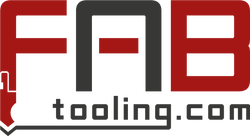Choosing the right press brake die or punch is a critical step to ensure bending quality, angle accuracy, and tool longevity. An improper tool selection can lead to part defects, premature wear, increased tonnage requirements, or even damage to the press brake itself.
This guide helps you select the right press brake tooling based on the standard used (Amada, Wila / Trumpf, etc.), the type of bending operation, sheet metal thickness, and production requirements.

Understanding Press Brake Tooling Standards
European Standard (Amada)
The European standard, often associated with Amada, is the most widely used press brake tooling standard. It offers excellent compatibility between manufacturers and a wide range of standard punches and dies. The European amada tooling is valued for its flexibility, controlled cost, and ease of use.
It is particularly well suited for:
- versatile workshops
- small to medium production runs
- environments requiring tooling adaptable to multiple applications
Wila / Trumpf Standard
The Wila / Trumpf standard is mainly used on high-end press brakes. It incorporates high-precision clamping systems (often hydraulic), allowing fast tool changes, excellent repeatability, and consistent accuracy.
The Wila / Trumpf tooling is recommended for:
- large-scale production
- frequent tool changes
- high tolerance and productivity requirements
Choosing the Right Die Based on Sheet Thickness and Material
The die V-opening width must be selected according to sheet metal thickness and material type. Poor selection can cause cracking, marking, or require excessive tonnage.
General guidelines:
Thin sheet metal: narrow V-opening for higher precision
Thick sheet metal: wider V-opening to reduce tonnage and protect the tooling
Material selection is also crucial. Bending stainless steel or high-strength steels requires dies and punches with enhanced heat treatment and hardness to withstand higher bending forces.
Selecting the Punch According to the Type of Bending
Each bending method imposes specific constraints.
Air Bending
This is the most common bending process. It requires proper alignment between the punch, the die V-opening, and the desired bend angle.
Coining
Coining requires extremely precise tooling capable of withstanding high tonnage while delivering consistent, accurate angles.
Complex Bending or Special Geometries
In these cases, the punch shape (straight, gooseneck, acute) is critical to avoid collisions and ensure sufficient clearance during bending operations.
Mass Production or Manual Fabrication?
Tooling selection strongly depends on your production setup.
Mass production: durability, repeatability, and fast tool changes are top priorities. Wila / Trumpf tooling is often preferred.
Manual fabrication or small batches: flexibility is essential. European standard tooling allows multiple applications with a limited number of tools.
Choosing the Right Tooling to Maximize Performance and Profitability
Selecting the right press brake die or punch is a strategic investment. Proper tooling improves part quality, reduces setup time, limits machine wear, and increases overall shop profitability.
By considering your press brake standard, bending application, sheet thickness, and production volume, you can select tooling perfectly suited to your needs. Working with a press brake tooling specialist ensures reliable, consistent, and long-lasting results.

